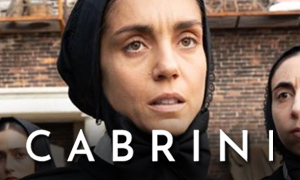The Dig: History vs. Hollywood
Ralph Fiennes
Born: December 22, 1962
Birthplace:
Ipswich, Suffolk, England, UK
Basil Brown
Born: January 22, 1888
Birthplace: Bucklesham, Suffolk, England
Death: March 12, 1977, Rickinghall, Suffolk, England (pneumonia)
Photo: Suffolk Archaeological Unit
Carey Mulligan
Born: May 28, 1985
Birthplace:
Westminster, London, England, UK
Edith Pretty
Born: August 1, 1883
Birthplace: Elland, Calderdale, West Riding of Yorkshire, England
Death: December 17, 1942, Richmond, Surrey, England (stroke)
Archie Barnes
Robert Pretty
Born: September 7, 1930
Birthplace: Chelsea, Greater London, England
Death: June 14, 1988, Boldre, Hampshire, England
Lily James
Born: April 5, 1989
Birthplace:
Esher, Surrey, England, UK
Peggy Piggott (aka Margaret Guido)
Born: August 5, 1912
Birthplace: Beckenham, Kent, England
Death: September 8, 1994, Bath, Somerset, England
Ben Chaplin
Born: July 31, 1970
Birthplace:
London, England, UK
Stuart Piggott
Born: May 28, 1910
Birthplace: Petersfield, Hampshire, England
Death: September 23, 1996, Berkshire, England (heart attack)
Ken Stott
Born: 1955
Birthplace:
Edinburgh, Scotland, UK
Charles Phillips
Born: April 24, 1901
Birthplace: England
Death: September 23, 1985
Photo: National Trust
Had Edith Pretty been interested in archaeology prior to the dig on her Sutton Hoo property?
Yes. Growing up, Edith had traveled a great deal with her family, visiting Austria-Hungry, Greece, and in her late twenties, Egypt. During her travels, she witnessed several excavations. The Dig true story reveals that her father had also been involved in the excavation of a Cistercian Abbey next to their home at Vale Royal. After she had married Frank Pretty and settled at their Sutton Hoo estate in Suffolk, Edith had always been interested in excavating the 18 mounds on their property. Their home on the estate, Tranmer House, is pictured below.
Why was the location called "Sutton Hoo"?
In researching The Dig's historical accuracy, we learned that the name "Sutton" is a compound noun derived from the Old English words sut (south) and tun (a settlement or farm). "Hoo" means hill or a raised area of land often overlooking water, and the land was referred to as the Hoo Farm by the mid-19th century. This was likely due to the burial mounds at the site. The ancient cemetery overlooked the River Deben, which was close by.
Was Edith Pretty a widow?
Yes. At the time Edith Pretty (portrayed by Carey Mulligan) hired local archaeologist Basil Brown to excavate the mounds on her Sutton Hoo estate in southeast Suffolk, she had been a widow for several years. Her husband, Frank Pretty, had died of stomach cancer on his 56th birthday in 1934. They had one son, Robert Dempster Pretty, who she had given birth to in 1930 at the age of 47. Robert is portrayed by Archie Barnes in The Dig movie.
How did Edith Pretty end up hiring archaeologist Basil Brown to explore the mounds on her property?
At the Woodbridge Flower Fete (festival) in 1937, Edith Pretty talked to Vincent B. Redstone, a member of the Suffolk Institute of Archaeology, about potentially excavating the mounds on her Sutton Hoo estate. In July of that year, a formal meeting was held during which Pretty, Redstone, and the curator of the Ipswich Corporation Museum, Guy Maynard, discussed the possibility of excavation. Maynard recommended local archaeologist Basil Brown (played by Ralph Fiennes in The Dig movie) to find out what, if anything, lay beneath the strange mounds on Pretty's land.
Edith Pretty hired Basil Brown, agreeing to pay him 30 shillings a week for two weeks to explore the mounds. He arrived on June 20, 1938 and stayed with Pretty's chauffeur. With the help of two workers on Pretty's estate, Brown first excavated what became known as Mound 3. He made several promising finds, including the remains of a cremated man, fragments of early Saxon pottery, rotten wooden fibers that together resembled a tray, the lid of a Mediterranean jug, a portion of a decorated limestone plaque, and a corroded iron axe head. It was enough to convince Pretty to have him excavate two more mounds in hopes of discovering more Sutton Hoo treasure.
He next excavated Mound 2 and Mound 4. He found little in the latter, as it appeared to have been robbed. In Mound 2, he found a bead, Bronze Age pottery shards, a gilt bronze disc, a piece of blue glass, the tip of a sword blade, iron knives, a ship's rivets, and a smaller boat that appeared to have been cut in half, with one half placed on top of the other as a cover. However, the top half was missing, suggesting the site had been looted. The excavation of Mound 2 and the discovery of this smaller boat is not included in the movie or book. Brown stayed until August 9, 1938, completing his first of two seasons of excavating the burial site. Edith Pretty gave the items to the Ipswich Museum, where they were put on display. The British Museum was also informed of the discoveries.
Brown came back on May 8, 1939 to continue the excavation, this time focusing on the largest hill, Mound 1, which concealed what became known as the Sutton Hoo burial ship. In The Dig movie and book, the entire excavation is condensed into one season in 1939, ending at the outbreak of WWII.
Was Basil Brown a professional archaeologist?
Like in The Dig movie, the true story confirms that Basil Brown was not considered to be a professional archaeologist. He was a local, self-taught, amateur archaeologist. However, it could be argued that in terms of experience, he was just as qualified as the professionals who would later end up taking over the Sutton Hoo dig. He had spent years exploring the countryside in north Suffolk in search of Roman artifacts. He had discovered eight medieval buildings, ancient roads, and the locations of Roman settlements. In 1934, Brown discovered and excavated a Roman kiln at Wattisfield, which was taken to the Ipswich Museum in 1935. In the process, he got to know the museum's curator, Guy Maynard, who hired Brown to work for the museum on a contractual basis.
His first job for the museum was to spend 13 weeks exploring the Suffolk villages of Stutson and Stanton Chare. He discovered a Roman villa at Stanton Chare, resulting in an extension of his contract to three seasons (30 weeks) from 1936 to 1938. Despite being paid to do what he loved, the semi-regular income wasn't enough and he had to continue working as an insurance agent and a special police constable to make ends meet.
Does actress Carey Mulligan resemble Edith Pretty?
In researching The Dig true story, we immediately discovered that one of the biggest liberties the movie takes is that despite aging her a little with makeup, actress Carey Mulligan is approximately 20 years younger than the real Edith Pretty was at the time of the excavation of the Sutton Hoo burial mounds. Mulligan was approximately 34 at the time of filming and Pretty was around 55 when the excavation on her Sutton Hoo property took place. However, we did discover that Mulligan better resembles Pretty when she was younger (pictured below).
Is the movie's romance between Peggy Piggott and Rory Lomax real?
No. In conducting The Dig fact check, we discovered that Johnny Flynn's character, photographer Rory Lomax, who is the cousin of Edith Pretty (Carey Mulligan), is entirely fictional. The romance with Peggy Piggott (Lily James) is fictional as well. It was likely inspired by the fact that Peggy Piggott's 1936 marriage to Stuart Piggott (portrayed by Ben Chaplin in the film) eventually ended in divorce in 1954. The novel falsely implies that they had just gotten married and interrupted their honeymoon to join the excavation. In the movie, Peggy complains that Stuart is more interested in working in the lab with John Brailsford than spending time with her. She finds herself taking an interest in the fictional Rory Lomax, who is called up by the RAF and heads off to war. Did Peggy and Stuart's marriage really end because Stuart was a closeted gay man? Find out in our episode The Dig: History vs. Hollywood.
Was Edith Pretty involved in spiritualism?
Yes. The movie only alludes to Edith's interest in spiritualism when she asks Basil Brown (Ralph Fiennes) if he saw anything while he was momentarily buried alive following a cave-in at the site. The informal religious movement known as spiritualism was still popular in the 1930s, and Edith had befriended a faith healer named William Parish. Spiritualists like Parish believed that the living can communicate with the spirits of the dead, usually by way of mediums. Edith funded the construction of a chapel for Parish and she backed the Woodbridge Spiritualist Church. There was a rumor that either Edith or a friend of hers had dreams/visions of soldiers walking around with swords and spears atop the mounds on her property. She sent archaeologist Basil Brown to the church, where he was told by a medium, "You are digging in the sand. The message is, 'Keep digging, you will find what you are searching for.'" The medium's advice came true in 1939 when the 88-foot burial ship was discovered in Mound 1. -Express.co.uk
Is the fleeting romance between Edith Pretty and Basil Brown real?
No. The flirtations with romance that we see between Edith Pretty (Carey Mulligan) and Basil Brown (Ralph Fiennes) in The Dig movie appear to have no basis in history. From what we can tell, their relationship was never more than platonic. Basil was married to Dorothy 'May' Brown, who worked as a domestic servant. May even wrote a letter to Edith Pretty, thanking her for giving her husband the chance to work on the excavation. Basil and May had rented a cottage in The Street, Rickinghall in 1935. They purchased the home in the 1950s and lived there for the remainder of their lives.
Did Basil Brown really discover a 7th-century Anglo-Saxon burial ship?
Yes. Among the 18 ancient burial mounds on Edith Pretty's 526-acre Sutton Hoo estate was a 7th-century Anglo-Saxon ship, which is thought to have been the final resting place of King Rædwald of East Anglia (c. 560 - c. 624). Unlike in the movie, the discovery of the Anglo-Saxon burial ship in Mound 1 didn't come as a complete surprise. In real life, Basil Brown had discovered similar iron ship rivets and a smaller boat in Mound 2 the previous year (not shown in the movie).
As he excavated Mound 1, Brown was assisted by Edith Pretty's gardener, John Jacobs, and her gamekeeper, William Spooner. Inside the 88-foot ship Brown discovered in Mound 1, was a burial chamber full of treasure, which, like in the movie, was excavated with the help of Charles Phillips and his team after they took over the dig. The ship burial helped shed light on a historical period that lacks documentation, and it changed how historians viewed the flow of ideas and objects across Europe in the 7th century. "The Dark Ages are no longer dark," declares archaeologist Charles Phillips (Ken Stott) in the movie. It's true that as a result of the Sutton Hoo discovery, Anglo-Saxon England was no longer thought of as part of the Dark Ages, at least not to the same degree it had been.
Did journalists really descend on the Sutton Hoo dig site?
Yes. While it's not highlighted in the movie, the excavation of the Sutton Hoo burial mounds sparked significant interest and resulted in a flood of journalists descending on the site. This happened after Ipswich Museum curator Guy Maynard gave the story to the press without the permission of archaeologist Charles Phillips, who had taken over leading the dig. Airplanes even flew over to get photographs of the excavation. Edith Pretty, a private person, did not welcome the attention. On several occasions, she threatened to shut down the dig entirely.
Did a burial mound cave in on Basil Brown?
No. While it makes for a suspenseful moment in The Dig movie and novel, the true story seems to lack any record of Basil Brown being nearly buried alive. As John Preston stated in his novel's author's note, "Certain changes have been made for dramatic effect." While there was no mention of a cave-in happening in real life, there was worry that a hill of sandy soil that had acted as a viewing platform could give way.
Had anyone else attempted to dig up the mounds prior to Basil Brown?
Yes. In Tudor times, gravediggers had attempted to dig up Mound 1 (the mound in which the Sutton Hoo burial ship was found). We know this because fragments of a pot from that period were found in a pit. It appears as if the diggers gave up, had lunch, and then threw the remains of their food into the mound. What they didn't realize is that they weren't digging in the center of the mound and were instead off to some degree. -Express.co.uk
Did professional archaeologists take over the excavation of Sutton Hoo from Basil Brown?
Yes. After professional archaeologist Charles Phillips visited the excavation on June 6, 1939, he reasoned from the size of the ship that it could be a royal burial. Realizing the potential significance of the burial site at Sutton Hoo, Phillips and Ipswich Museum curator Guy Maynard decided to involve the British Museum's Department of Antiquities. Edith Pretty was hesitant to do so, fearing that the dig would be delayed indefinitely.
Like in The Dig movie, a fact check confirms that professional British archaeologist Charles Phillips was assigned to take over the Sutton Hoo excavation and was to begin his work there in July 1939, focusing on the ship's burial chamber. Despite being told to stop until Phillip's team arrived, Basil Brown continued to work on excavating the ship. Phillips recruited Welsh archaeologist William Grimes, British archaeologist O.G.S. Crawford, and husband and wife archaeologists Stuart and Peggy Piggott. They discovered more than 260 additional items of the Sutton Hoo treasure. Some of the things found inside the burial chamber included weapons, gold and garnet jewelry, silver, containers, shoes, buckles, gold coins and ignots, baptismal spoons, drinking horns and vessels, etc. The Sutton Hoo helmet, exquisite gold shoulder clasps, gold belt buckle, and the Sutton Hoo sword are four of the most significant items.
Another reason more archaeologists were brought in was because they knew war could break out at any moment and they were in a hurry to finish the excavation and get the items to a safe place.
Was Basil Brown allowed to continue working at the site?
Yes, but The Dig true story reveals that Charles Phillips was now in charge of the excavation of the ship's burial chamber that Basil Brown had discovered in Mound 1. In real life, Charles Phillips and Basil Brown were respectful to one another during the excavation. Phillips even complimented Brown on the meticulous manner with which he had excavated the ship. He somewhat reluctantly gives a similar compliment in the film. Brown assisted Phillips after he arrived.
What happened to the artifacts found at Sutton Hoo?
At a treasure trove inquest on August 14, 1939, Basil Brown testified and helped convince officials that the enormous find at Sutton Hoo was the property of Edith Pretty. After the inquest, Pretty ended up donating the Sutton Hoo treasure to the British Museum. To commend her generosity and contribution to the country, Winston Churchill offered her a designation of CBE (Commander of the Most Excellent Order of the British Empire) but she declined.
Edith Pretty never got to see the full impact of her generosity. Although the first Sutton Hoo exhibition opened at the British Museum in 1940, it was soon packed up and kept in underground tunnels between Aldwych and Holborn tube stations to shield it from air raids during WWII. Pretty's land was used for military training during the war. Tanks drove over the burial mounds. She never got to see the full impact of her generosity. Edith Pretty died in 1942 at age 59 following a stroke. Her son Robert, then just 12 years old, went to live with his Aunt Elizabeth (his mother's sister).
Have any other burial grounds been found near Sutton Hoo?
Yes. A second burial ground was found in the year 2000 on another hill-spur roughly 1,600 ft upstream from the original burial mounds at Sutton Hoo. Both cemeteries are in close proximity to the River Deben.
Was The Dig filmed at Sutton Hoo?
There was no filming done at the actual Sutton Hoo site, which is a historic monument. It would have been impossible to physically recreate the excavation of the royal burial ship at the location. Some scenes were filmed in nearby villages, including Snape, Thorpeness and Butley.
Link-to-Learn More:
- Photos of a Young Edith Pretty and Her Family | ArchMusicMan Blog
- The British Museum's Sutton Hoo Collection and Virtual Tour







